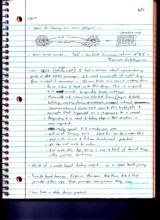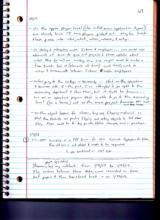|
Basic Assignments
|
Options & Settings
|
Main Time Information
|
||||||||||||||||||||||
|
|
|
|
|
||||||
|
||||||
|
|
|
Notes:
|
|
-Two of our byproducts are flexibility and education on choices and proper training. -Steve said that he likes to refer to adilas as an education in progress. You start in kindergarten and work up to High School and college. We can let people know what grade they are in and help them progress. -Focus on the basics! These are the building blocks like PO’s, invoices, deposits, and expense/receipts. -People are in business to make money. One of the reasons adilas is so valuable is, if they learn and complete every step, they know the health and status of their endeavors. We just need to continue to find those people that want to know the truth. -Idea for more settings – corp-wide settings for tax categories, customer log types, invoice types and payment types would be awesome. Let each company choose which ones they wanted and/or create their own – more flexibility. -On elements of time – we need the ability to add and manage reoccurring events. -Ideas for showing our main players (see sketches on page 65 of Blue Notebook). -New buzz words – “UC” = Unified Communications and “BI” = Business Intelligence. -On 1/5/13 I had a dream about remembering parts of the adilas journey. It went on and off all night long. It was kind of in a movie or story form, here is what I remember: o Do an intro and lead into the story. This is a quick 2-3 minutes to quickly touch on things. o Then roll into where we started from (paper tickets, batching, mailing, faxing, spreadsheets, minimal internal communications). Cover each year and the highlights and concepts that happened as a response to a need. o Responding to a need and taking steps in that direction is very important. o Maybe spend 2-3 minutes per year. o End as of January 2013, shoot for 20-30 minutes total. o End with vision and future development potential. o At the end invite to action. o End with the logo being a mix and blend of tons of things. o The journey continues. -Think of a needs based history report or a need based journey. -Principle based learning. Empower the users. Help them look and find principles and then apply those principles everywhere they can. -We have a data driver product. -Sometimes we purposely brake or interrupt the flow, links, relationships and automation. Often this is due to time, control or other variables (choices and decisions). When we do this, it is very important to come back around and fix as needed. For example: setting the main value to zero and then coming back to it. -Sometimes we purposely move away from automation for certain things. This helps to force a decision or a cause and effect relationship. With proper education, this decision making can really help people to learn. -What are the differences between a one-to-many relationship and a flat file? There are tons, here are a few: 1-many (One-to-many) vs. Flat file o Different containers - Same container o Add as needed - Full load every time o Dynamic - Static unless you increase the load for all o Permission able - Non permission able o Expandable - All or none o Light weight o Very searchable -Use the analogy of a vehicle moving over time. The different compartments for storing things are the passengers, the trunk, under the hood, etc. Another, simpler analogy might be a divided Tupperware container with different sections. -In church we have a simple one page document that has what we call the 13 articles of faith. Maybe do something like this for adilas on the doctrine, core, principles or concept level. -On the upper player level (also called main application types) we already have 13 main players picked out. Maybe break those pieces into who, what, when, where and why. -On dealing and interacting with inters and employees – we could use elements of time to give out projects and show updates about what they (or we) are working on. We might need to make a few tweaks but it (elements of time) could totally work to assign and communicate between inters and/or employees. -When going to the college or University – start on the operations and business side. In the past, I’ve attempted to go right to the accounting department and show them, but if truth be known, we are an operations program that is able to go to the accounting level (as a bonus) not as the main project. Remember the cart and the horse. -On the object lessons for classes, bring real flagging material so that the students can practice flagging and asking objects to tell their story. Flags could be for key points, status changes and or problems. |




